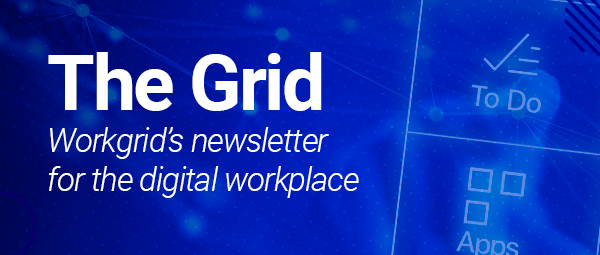The global coronavirus pandemic has fundamentally changed the nature of how works gets
done. Physical office spaces will likely never be the same and distributed workforces are rapidly become the de facto standard for companies who have come to realize that offices aren’t a requirement for business success.
As organizations rethink their strategies behind how the physical and digital workplaces intersect, they will also have to rethink the employee experience. A flexible, seamless experience that simplifies the work day will be fundamental to the ongoing success of employees who are working under a variety of different conditions, either at home, in an office or even a combination of both.
So how can companies empower every employee in all of the unique situations that this “New Abnormal” has created? And how can they continue to create experiences that support the success of employees and the organization over the long-term?
In our new guide “Is Your Organization Prepared for the Future of Work? A Guide for Navigating the Return to Work & Beyond,” we discuss a three-phase plan to help organizations create a digital workplace that can withstand the shifting needs of today as well as the changes the future will certainly bring. This blog post details phase one of that plan, understanding the needs of employees.
Understanding the needs of a distributed workforce
Delivering a digital employee experience that empowers workers is challenging under the best of circumstances. There are lots of ways it can go wrong. But noted author and organization development strategist Jon Ingham had some clear thoughts about one
possible mistake companies could make that would really cripple their efforts to effectively support a distributed workforce:
The biggest worry is always that we forget to put people first.
That’s an awfully big mistake to make, especially when employees’ expectations of digital experiences are higher than ever before and attracting and retaining top talent is such a big focus.
Thankfully, organizations can avoid an error of that magnitude by simply putting employees
first - making a genuine effort to understand what it is that they want and need to be successful.
In fairness, that can be easier said than done – understanding requires empathy and commitment - but it’s an exercise that will pay off in spades when it comes to creating quality digital experiences that are able to meet the challenges of rapidly changing business requirements.
So what’s the best way to achieve that kind of understanding?
Unfortunately, there are no shortcuts to understanding the true experience of employees
throughout their entire tenure with an organization, so it’s best to undergo a full journey mapping exercise.
For organizations that aren’t familiar with journey mapping, it’s a tool used to identify opportunities for improving the employee experience by visually outlining the end-to-end experience an employee has throughout their time with an organization. This process includes all the touch points an employee that has that might impact their experience and also details how they’re thinking and feeling at each point, making it possible for organizations to understand pain points from the employee’s point of view. The steps for conducting a journey mapping exercise are pretty straightforward and include defining the personas and segments of your organization, building out full profiles for each persona,
and mapping out the journey for the experiences that need improvement.
![[asset] Sample User Journey](https://images.ctfassets.net/z7p73u8c0thn/5g3ngan968jFzNUeVwz59x/1ee508083b74b167417924cb9217f5c1/Sample_User_Journey.png?w=1200&h=853&q=60&fm=png&bg=transparent)
Even if you’ve already created personas, don’t be tempted to go with what you have and assume that the needs that have already been laid out are still applicable. The pressures and expectations of work have entered an entirely new world. Employees are working under a diverse set of circumstances and because of that will require different access to different resources across a variety of different channels. It’s important to revisit the personas you
have and update them to reflect the challenges employees are currently facing.
The insights you’ll gain by engaging in a journey mapping or voice of the employee exercise will be well worth the effort, helping you to identify the critical moments that matter to employees that are in desperate need of improvement. With those identified, it then becomes easy to enact changes that have significant and long-lasting impact on the employee experience across the organization.
"Clear and inspiring communication is central to making this next unsteady phase a success." (Source: McKinsey)
Some common needs that employees express, particularly in circumstances like these, include:
Better communication channels for important information, such as updates on new policies and procedures, announcements about office openings and closings, details about training opportunities, etc.
Easy-to-use tools and systems that don’t require a lot of specialized knowledge.
Simplified processes that aren’t bogged down with lots of steps.
A centralized location for finding information and asking questions.
More time to spend on the meaningful work that keeps employees engaged and happy.
Flexibility – the continued ability to work when and where it’s convenient. It’s the only way
employees can juggle the many conflicting responsibilities they’re facing right now.
So what’s the path forward to address these needs and create an employee experience that
supports long-term success?
Learn more about phases two and three of this plan, which cover implementing employee-focused technology and refining the digital experience over time, check out our “Guide for
Navigating the Return to Work & Beyond.”




